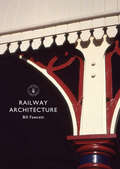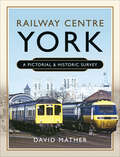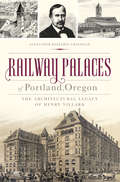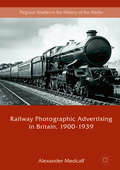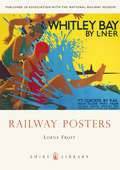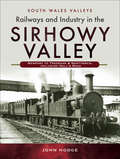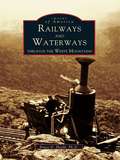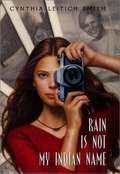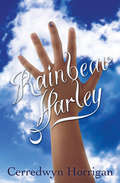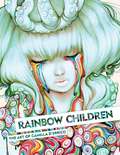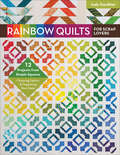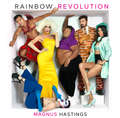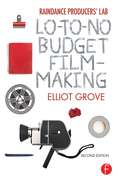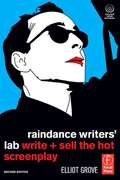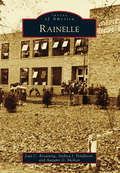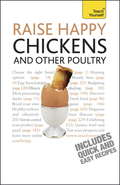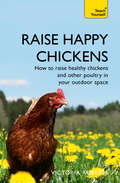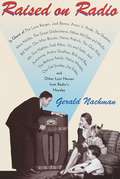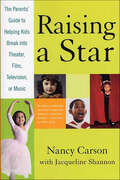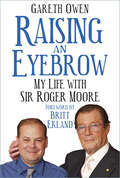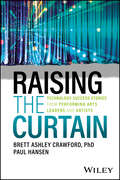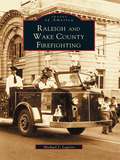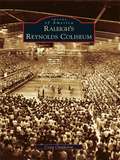- Table View
- List View
Railway Architecture
by Bill FawcettA guide to the architecture that gives British railways their identity, from stations to signal boxes.Roots of Britain's railways lie in the wooden-railed colliery wagonways of around 1600, but it was almost 1830 before specific railway architecture became needed. This evolved rapidly down to 1850, and for some time afterwards Britain led the world in designing passenger stations. Though stylistic dress followed contemporary fashions, their handling of space and of large crowds of people was something quite new. Glass and iron were used to produce elegant platform roofs, many exploiting the decorative potential of cast iron. However, the most striking contribution was made by the great arched station sheds, often seen as the 19th century's counterpart to medieval cathedrals. Between the 20th century's two world wars, architectural progress on Britain's railways was largely confined to London Transport, but the last few decades have seen a renewal of confidence and investment, matched by some interesting new buildings.
Railway Centre York: A Pictorial & Historic Survey
by David MatherThe ancient city of York has been closely associated with railways since their conception and promotion by the ‘Railway King’, George Hudson. Its impressive station and engine sheds have played host to the elite of East Coast Main Line traction as well as a wide variety of ‘locals’. The major stabling point of York North shed, coded 50A was home to a diverse collection of steam locomotives as well as welcoming visiting engines from the wider network. As such it attracted interest from enthusiasts not only of steam power but later on as an important diesel depot, finally closing but later to be reborn as the National Railway Museum. Constructed in 1877 it was the largest railway station in the world. Legendary expresses have called at the platforms under the imposing curved glass and iron roof, now a Grade II* listed building. Today’s ‘flyers’ race between London and Edinburgh at speeds unheard of in steam days while cross-country services also bring visitors keen to explore York’s historic and cultural heritage. Yet the sight and sound of steam traction is still a major attraction in this modern era, with crowds flocking to see preserved locomotives at the head of the trains which regularly grace these famous tracks. David Mather has brought together a collection of his images which represents York’s railway heritage from its earliest days through to the present and which shows the city to be still justified in claiming the title ‘Railway Centre’.
Railway Palaces of Portland, Oregon: The Architectural Legacy of Henry Villard (Landmarks)
by Alexander Benjamin CragheadIn 1883, railroad financier Henry Villard brought Portland and the Pacific Northwest their first transcontinental railroad. Earning a reputation for boldness on Wall Street, the war correspondent turned entrepreneur set out to establish Portland as a bourgeoning metropolis. To realize his vision, he hired architects McKim, Mead & White to design a massive passenger station and a first-class hotel. Despite financial panics, lost fortunes and stalled construction, the Portland Hotel opened in 1890 and remained the social heart of the city for sixty years. While the original station was never built, Villard returned as a pivotal benefactor of Union Station, saving its iconic clock tower in the process. Author Alexander Benjamin Craghead tells the story of this Gilded Age patron and the architecture that helped shape the city's identity.
Railway Photographic Advertising in Britain, 1900-1939 (Palgrave Studies in the History of the Media)
by Alexander MedcalfThis book explores the phenomenal resources dedicated to understanding and encouraging passengers to consume travel from 1900 to 1939, analysing how place and travel were presented for sale. Using the Great Western Railway as a chief case study, as well as a range of its competitors both on and off the rails, Alexander Medcalf unravels the complex and ever-changing processes behind corporate sales communications. This volume analyses exactly how the company pictured passengers in the countryside, at the seaside, in the urban landscape and in the company’s vehicles. This thematic approach brings transport and business history thoroughly in line with tourism and leisure history as well as studies in visual culture.
Railway Posters
by Lorna FrostRailway posters have a huge appeal to the modern audience, but just what is it that appeals to us? Enduring images of iconic locomotives, bathing beauties and characters such as Sunny South Sam are testament to the persuasive power of the railway company marketing departments established in the late nineteenth century. Railway posters not only tell us about railway history and technology, architectural and engineering accomplishments, but they also give us insights into the cultural and social significance of the railways. The influence of the railway industry on our cities and coastlines and the development of leisure time and holiday resorts can be seen in the recurring images of ramblers, bathers and idyllic tourist destinations. This book explores the changing styles and functions of the railway poster from the early pre-grouping days through to the inter-war 'golden age', World War Two and the nationalised British Railways.
Railways and Industry in the Sirhowy Valley: Newport to Tredegar & Nantybwch, including Hall's Road (South Wales Valleys)
by John HodgeA work &“which must rank as one of the finest railway history books of 2020&” from the author of Llanelly West to Carmarthen (West Somerset Railway Association).Railways and Industry in the Sirhowy Valley is the first full history of the railways that served this important area of Welsh industry, covering all aspects of its rail transport and manufacturing history. It is the latest volume in an ongoing series of books, covering the history and development of rail transport in the South Wales valleys. The area once boasted some very important industrial manufacturers, including the Tredegar Iron Works and numerous other iron smelting companies. This volume covers the industrial, economic and social history of this fascinating area of the South Wales valleys and the railway that once served the area.&“A welcome addition to the literature, placing the line in a more appropriate context than previous volumes about the valley railways . . . John Hodge&’s very attractive book presents a wealth of detail in a very readable form.&” —Books on the Line&“The photographic section is tremendous, with 36 road maps and a collection of 530 black and white photographs that offer us an interesting portrait of the area studied.&” —Miniaturas JM
Railways and Waterways: Through The White Mountains
by Bruce D. HealdThe White Mountains and the area's many lakes, rivers, and waterfalls have long been an attraction for thousands of visitors to this most scenic mountain area in all of New England. In Railways and Waterways of the White Mountains, you will explore the wonders of the many historic bodies of water that have drawn visitors and settlers to the North Country for hundreds of years, offering a beautiful landscape and a wealth of natural abundance. Railways and Waterways of the White Mountains represents the history of the early railroads through the many villages and natural landscapes of the Notches. As you leaf through the pages within, you will witness the appeal and charm of the White Mountains in their infinite variety of scenery, inexhaustible in their resources and unlimited in their manifold combinations. During our reminiscent journey, you will travel up the Pemigewasset, Saco, and Ammonoosuc Rivers, and experience the brilliant landscape of the Franconia, Pinkham, and Crawford Notches via the early steam railroads of the late 1800s.
Rain Is Not My Indian Name
by Cynthia Leitich SmithThe next day was my fourteenth birthday, and I'd never kissed a boy--domestic style or French. Right then, I decided to get myself a teen life. Cassidy Rain Berghoff didn't know that the very night she decided to get a life would be the night that Galen would lose his. It's been six months since her best friend died, and up until now Rain has succeeded in shutting herself off from the world. But when controversy arises around her aunt Georgia's Indian Camp in their mostly white mid western community, Rain decides to face the outside world again--at least through the lens of her camera. Hired by her town newspaper to photograph the campers, Rain soon finds that she has to decide how involved she wants to become in Indian Camp. Does she want to keep a professional distance from the inter tribal community she belongs to? And just how willing is she to connect with the campers after her great loss? In a voice that resonates with insight and humor, Cynthia Leitich Smith tells of heartbreak, recovery, and reclaiming one's place in the world.
Rainbeau Harley (Rainbeau Harley #1)
by Cerredwyn Horrigan"The dialogue-rich story creates multidimensional characters that come to life on the page. In addition, Horrigan’s coming-of-age novel has a fast-paced plot that brims with life lessons. An intimate, emotional journey through the hardships of one girl’s adolescence.” — Kirkus Reviews Bi-racial, fourteen-year-old Rainbeau Harley wants nothing more than to maintain her freedom from neglectful parents and achieve her dream to become a tattoo artist. She works more diligently in her uncle’s tattoo shop than she does at school. When eighth grade ends, her mother’s manfriend makes her feel unsafe in the round wooden yurt she calls home. Rainbeau agrees to a road trip across the country with her mother to avoid his advances. On the journey, she learns to improvise, adapt, and overcome to survive a soaking in the Mississippi, to avoid a peeping Tom and a tatted cat lady, and to confront an Oyster and things hairy with giant teeth. Rainbeau must relinquish her dreams and her freedom in order to attain what she truly desires – a real family. Readers who enjoy the works of Sharon Creech, Lisa Yee, and Jane Smiley will appreciate the first book in this series by Cerredwyn Horrigan.
Rainbow Children: The Art of Camilla d'Errico
by Camilla d'ErricoEnter the unique and beautiful dream world of Rainbow Children: The Art of Camilla d'Errico! The 3rd art book featuring one of the most powerful artists in the pop surrealism art movement is here!Camilla d'Errico is a world-renowned painter, illustrator, comic artist, as well as toy and clothing designer. This gorgeous hard cover compilation of her work, the third such collection from Dark Horse, is the perfect addition to the library of anyone who appreciates her fine art and manga-inspired style! Both beautiful and haunting, her paintings will mesmerize and enthrall all.This is the latest book from Camilla d'Errico that comprises her Dark Horse series The Art of Camilla d'Errico. Previous books in the series are Femina and Fauna: The Art of Camilla d'Errico and Helmetgirls: The Art of Camilla d'Errico. All books are stand alone titles.
Rainbow Quilts for Scrap Lovers: 12 Projects from Simple Squares—Choosing Fabrics & Organizing Your Stash
by Judy Gauthier&“Not only are the projects cheerful and lovely, but the author spends time explaining how to save and tame all those wonderful leftovers.&” —Down Under Quilts Learn to rescue fabric leftovers with twelve colorful quilt patterns for scrap lovers. Judy Gauthier teaches you her indispensable system for cutting from &“real,&” oddly shaped scraps, not just strips or precuts! Cut scraps into 3 1/2&” 4 1/2&”, and 5 1/2&” squares—a magical combination for all skill levels—using traditional rotary cutting or Judy&’s fast2cut Simple Square Templates. Clever organizing and quilt-assembly tips will help you uncover hidden treasures from your stash. &“Author Judy Gauthier guides readers through cutting, sorting, and organizing scraps into twelve colorful rainbow quilts. Using simple shapes, these patterns are perfect for quilters looking to use their odd-shape scraps and reduce their stash size.&” —American Patchwork & Quilting &“Bright and cheerful ways to use up your scraps to make beautiful quilts. twelve projects from easy squares make sensational quilts . . . Recommended.&” —yarnsandfabrics.co.uk
Rainbow Revolution
by Magnus HastingsRainbow Revolution is a collection of vibrant portraits that celebrate the expanding spectrum of queer identity and visibility.Starting with an empty white box, renowned photographer Magnus Hastings invites members of the LGBTQIA+ community to creatively envision the space.Funny, political, personal, racy, magical, and matter-of-fact—each individual presents themselves as they would like to be seen.Features more than 300 photographsIncludes a number of short, moving statements by some of the subjects about who they are, and what that meansA beautifully diverse celebration of queer identity and communityProud, playful, defiant, and diverse, the empowering images and individuals in this beautiful volume represent the strength of knowing and expressing who we are.Rainbow Revolution includes Kathy Griffin, Jade Thirlwall, Luke Evans, Boy George, Peppermint, Adore Delano, Eureka O'Hara, Alaska Thunderf*ck, Gigi Gorgeous, Nico Tortorella, and many more.A gorgeous book for the LGBTQIA+ audience and their friends, loved ones, and community around themIdeal for display on the coffee tableGreat for fans of Magnus Hastings' photography, Rupaul's Drag Race, and moreAdd it to the shelf with books like Queer: A Graphic History by Dr. Meg-John Barker, A Quick Easy Guide to They/Them Pronouns by Archie Bongiovanni, and We Are Everywhere: Protest, Power, and Pride in the History of Queer Liberation by Matthew Riemer and Leighton Brown.
Raindance Producers' Lab Lo-To-No Budget Filmmaking: Lo-to-no Budget Filmmaking
by Elliot GroveFirst published in 2012. Routledge is an imprint of Taylor & Francis, an informa company.
Raindance Writers' Lab: Write + Sell the Hot Screenplay
by Elliot GroveIf you're looking for a straightforward, practical, no-nonsense guide to scriptwriting that will hold your hand right the way through the process, read on! The Raindance Writers' Lab guides you through the tools that enable you to execute a strong treatment for a feature and be well on the way to the first draft of your script.Written by the creator of the Raindance Film Festival himself, Elliot Grove uses a hands-on approach to screenwriting based on his many years of experience teaching the subject for Raindance training. He uses step-by-step processes illustrated with diagrams and charts to lend a visual structure to the teaching. Techniques are related to real-life examples throughout, from low budget to blockbuster films.The Companion Website contains interviews with British writers and directors as well as a handy series of legal contracts, video clips and writing exercises.In this brand new 2nd edition, Grove expands on his story structure theory, as well as how to write for the internet and short films.The website also contains sample scripts and legal contracts, a writing exercise illustrated with a video clip, a folder full of useful hyperlinks for research, and a demo version of Final Draft screenwriting software.
Rainelle (Images of America)
by Autumn G. Shelton Joan C. Browning Andrea J. PendletonMost of the lumber camps that harvested 8.5 million acres of West Virginia's virgin forest had faded into history when John Raine built Rainelle in the Meadow River basin in 1909. By recruiting workers of high morale and character, many of them highly skilled, Rainelle became noted as "the best hardwood sawmill town in the country" and "a town built to carry on." Through vintage photographs, Rainelle shares stories of the four generations who built and operated a prosperous Meadow River Lumber Company for 60 years, using the entire tree "from bark to bird's nest," and their descendants who continue building the town decades after the mill's closing. Rainelle captures founders and lumber workers, preachers and physicians, war heroes and athletes, businesses and churches, schools and recreation, as well as that spice of West Virginia life, politics and government.
Raise Happy Chickens: How to raise healthy chickens and other poultry in your outdoor space (Teach Yourself - General Ser.)
by Victoria RobertsRaise Happy Chickens and Other Poultry is a quickly accessible but authoritative guide, suitable for total beginners, that provides all the information you need to start keeping your own chickens.Telling you which breed of bird lays best and providing useful guidance on housing, equipment and the necessities of day-to-day care, it meets all the needs of anyone who dreams of a garden full of happy, clucking birds. It also goes beyond just chickens to other types of poultry, and gives advice and practical guidelines on housing, with full explanation of key areas like welfare, behaviour and diet.NOT GOT MUCH TIME?One, five and ten-minute introductions to key principles to get you started.AUTHOR INSIGHTSLots of instant help with common problems and quick tips for success, based on the author's many years of experience.TEST YOURSELFTests in the book and online to keep track of your progress.EXTEND YOUR KNOWLEDGEExtra online articles at www.teachyourself.com to give you a richer understanding of chicken keeping.FIVE THINGS TO REMEMBERQuick refreshers to help you remember the key facts.TRY THISInnovative exercises illustrate what you've learnt and how to use it.
Raise Happy Chickens: How to raise healthy chickens and other poultry in your outdoor space (Teach Yourself General Ser.)
by Victoria RobertsIs this the right book for me?Raise Happy Chickens and Other Poultry is a quickly accessible but authoritative guide, suitable for total beginners, that provides all the information you need to start keeping your own chickens.Telling you which breed of bird lays best and providing useful guidance on housing, equipment and the necessities of day-to-day care, it meets all the needs of anyone who dreams of a garden full of happy, clucking birds. It also goes beyond just chickens to other types of poultry, and gives advice and practical guidelines on housing, with full explanation of key areas like welfare, behaviour and diet.Raise Happy Chickens and Other Poultry includes:Chapter 1: ChickensWhich breed is best for you?BuyingHandling chickensStart-up costs and other considerationsHousingRoutinesFeeding and wateringHealth, welfare and behaviourHow to cope with a broody henSelling eggs: the regulationsWhat to do when you want to go on holidayBreeding your own stockChapter 2: DucksWhich breed is best for you?BuyingHandling ducksStart-up costs and other considerationsHousingRoutinesFeeding and wateringHealth, welfare and behaviourHow to cope with a broody duckSelling eggs: the regulationsWhat to do when you want to go on holidayBreeding your own stockChapter 3: GeeseWhich breed is best for you?BuyingHandling geeseStart-up costs and other considerationsHousingRoutinesFeeding and wateringHealth, welfare and behaviourHow to cope with a broody gooseSelling eggs: the regulationsWhat to do when you want to go on holidayBreeding your own stockChapter 4: TurkeyWhich breed is best for you?BuyingHandling turkeyStart-up costs and other considerationsHousingRoutinesFeeding and wateringHealth, welfare and behaviourHow to cope with a broody turkeySelling eggs: the regulationsWhat to do when you want to go on holidayBreeding your own stockChapter 5: other breeds - guinea fowl and quailGuinea fowlQuailChapter 6: Meat productionGeneral principlesSlaughterPlucking and hangingProcessing and cleaningTrussingChapter 7: Diseases, problems and general troubleshootingFree-range poultry diseasesCommon problems and some causesCommon diseases by ageLife expectancyDescription of major diseasesChapter 8: Cooking with eggsFavourite recipes Learn effortlessly with an easy-to-read page design and new added features:Not got much time?One, five and ten-minute introductions to key principles to get you started.Author insightsLots of instant help with common problems and quick tips for success, based on the author's many years of experience.Test yourselfTests in the book and online to keep track of your progress.Extend your knowledgeExtra online articles to give you a richer understanding of chicken keeping.Five things to rememberQuick refreshers to help you remember the key facts.Try thisInnovative exercises illustrate what you've learnt and how to use it.
Raise Happy Chickens: How to raise healthy chickens and other poultry in your outdoor space (Teach Yourself General)
by Victoria RobertsIs this the right book for me?Raise Happy Chickens and Other Poultry is a quickly accessible but authoritative guide, suitable for total beginners, that provides all the information you need to start keeping your own chickens.Telling you which breed of bird lays best and providing useful guidance on housing, equipment and the necessities of day-to-day care, it meets all the needs of anyone who dreams of a garden full of happy, clucking birds. It also goes beyond just chickens to other types of poultry, and gives advice and practical guidelines on housing, with full explanation of key areas like welfare, behaviour and diet.Raise Happy Chickens and Other Poultry includes:Chapter 1: ChickensWhich breed is best for you?BuyingHandling chickensStart-up costs and other considerationsHousingRoutinesFeeding and wateringHealth, welfare and behaviourHow to cope with a broody henSelling eggs: the regulationsWhat to do when you want to go on holidayBreeding your own stockChapter 2: DucksWhich breed is best for you?BuyingHandling ducksStart-up costs and other considerationsHousingRoutinesFeeding and wateringHealth, welfare and behaviourHow to cope with a broody duckSelling eggs: the regulationsWhat to do when you want to go on holidayBreeding your own stockChapter 3: GeeseWhich breed is best for you?BuyingHandling geeseStart-up costs and other considerationsHousingRoutinesFeeding and wateringHealth, welfare and behaviourHow to cope with a broody gooseSelling eggs: the regulationsWhat to do when you want to go on holidayBreeding your own stockChapter 4: TurkeyWhich breed is best for you?BuyingHandling turkeyStart-up costs and other considerationsHousingRoutinesFeeding and wateringHealth, welfare and behaviourHow to cope with a broody turkeySelling eggs: the regulationsWhat to do when you want to go on holidayBreeding your own stockChapter 5: other breeds - guinea fowl and quailGuinea fowlQuailChapter 6: Meat productionGeneral principlesSlaughterPlucking and hangingProcessing and cleaningTrussingChapter 7: Diseases, problems and general troubleshootingFree-range poultry diseasesCommon problems and some causesCommon diseases by ageLife expectancyDescription of major diseasesChapter 8: Cooking with eggsFavourite recipes Learn effortlessly with an easy-to-read page design and new added features:Not got much time?One, five and ten-minute introductions to key principles to get you started.Author insightsLots of instant help with common problems and quick tips for success, based on the author's many years of experience.Test yourselfTests in the book and online to keep track of your progress.Extend your knowledgeExtra online articles to give you a richer understanding of chicken keeping.Five things to rememberQuick refreshers to help you remember the key facts.Try thisInnovative exercises illustrate what you've learnt and how to use it.
Raise Happy Chickens: How to raise healthy chickens and other poultry in your outdoor space (Teach Yourself General)
by Victoria RobertsRaise Happy Chickens and Other Poultry is a quickly accessible but authoritative guide, suitable for total beginners, that provides all the information you need to start keeping your own chickens.Telling you which breed of bird lays best and providing useful guidance on housing, equipment and the necessities of day-to-day care, it meets all the needs of anyone who dreams of a garden full of happy, clucking birds. It also goes beyond just chickens to other types of poultry, and gives advice and practical guidelines on housing, with full explanation of key areas like welfare, behaviour and diet.NOT GOT MUCH TIME?One, five and ten-minute introductions to key principles to get you started.AUTHOR INSIGHTSLots of instant help with common problems and quick tips for success, based on the author's many years of experience.TEST YOURSELFTests in the book and online to keep track of your progress.EXTEND YOUR KNOWLEDGEExtra online articles at www.teachyourself.com to give you a richer understanding of chicken keeping.FIVE THINGS TO REMEMBERQuick refreshers to help you remember the key facts.TRY THISInnovative exercises illustrate what you've learnt and how to use it.
Raised on Radio
by Gerald NachmanFor everybody "raised on radio"--and that's everybody brought up in the thirties, forties, and early fifties--this is the ultimate book, combining nostalgia, history, judgment, and fun, as it reminds us of just how wonderful (and sometimes just how silly) this vanished medium was. Of course, radio still exists--but not the radio of The Lone Ranger and One Man's Family, of Our Gal Sunday and Life Can Be Beautiful, of The Goldbergs and Amos 'n' Andy, of Easy Aces, Vic and Sade, and Bob and Ray, of The Shadow and The Green Hornet, of Bing Crosby, Kate Smith, and Baby Snooks, of the great comics, announcers, sound-effects men, sponsors, and tycoons.In the late 1920s radio exploded almost overnight into being America's dominant entertainment, just as television would do twenty-five years later. Gerald Nachman, himself a product of the radio years--as a boy he did his homework to the sound of Jack Benny and Our Miss Brooks--takes us back to the heyday of radio, bringing to life the great performers and shows, as well as the not-so-great and not-great-at-all. Nachman analyzes the many genres that radio deployed or invented, from the soap opera to the sitcom to the quiz show, zooming in to study closely key performers like Benny, Bob Hope, and Fred Allen, while pulling back to an overview that manages to be both comprehensive and seductively specific.Here is a book that is generous, instructive, and sinfully readable--and that brings an era alive as it salutes an extraordinary American phenomenon.From the Hardcover edition.
Raising a Star: The Parent's Guide to Helping Kids Break into Theater, Film, Television, or Music
by Jacqueline Shannon Nancy CarsonSo your child wants to be a star? But what does it really take? Money? Looks? Tons of time? Not necessarily.Nancy Carson, a children's agent who has worked in the industry for more than twenty-five years and has guided the careers of such celebrities as Britney Spears, Mischa Barton, and even a young Cynthia Nixon, dishes the facts on what it takes to break your child into the entertainment industry. The first parents' guide to getting kids into the business written by one of the industry's top children's agents, Raising a Star is a complete step-by-step guide that will help parents navigate the murky waters of show business. From how to find the right representative to what producers and directors are really looking for in children today, Nancy Carson offers practical advice and anecdotes culled from her years of experience. Raising a Star is the most candid and informative guide for parents who want to help make their child a star.
Raising an Eyebrow: My Life with Sir Roger Moore
by Gareth Owen Britt Ekland'a book you simply must read if you’re a fan of movies, James Bond or Roger Moore’ Movies in Focus‘Owen writes with wit, affection and poignancy . . . Highly recommended’ From Sweden with Love‘a breezy, enjoyable read that takes few sittings to get through . . . The affection and energy with which Raising an Eyebrow has been written is intoxicating’ Entertainment FocusHaving taken on the role of Roger Moore’s executive assistant in 2002, Gareth Owen became the righthand man to an icon, as well as his co-author, onstage co-star and confidant. Gareth was faithfully at Roger’s side for fifteen years until his passing in 2017. In Raising an Eyebrow, Gareth Owen recounts his times with Roger Moore and gives a unique and rare insight into life with one of the world’s most beloved actors.For all his celebrity, Roger Moore was quite reserved; in interviews he rarely spoke about himself, much preferring to tell fun tales about others. But his trusted sidekick was with him throughout his worldwide travels, his UK stage shows, his writing process and his book tours, and as he received his Knighthood. There were genuinely hilarious, heartfelt and extraordinary moments to be captured and Gareth Owen was there to share them all.
Raising the Curtain: Technology Success Stories from Performing Arts Leaders and Artists
by Paul Hansen Brett Ashley CrawfordLearn how emerging technologies benefit artists and performing arts organizations Raising the Curtain: Technology Success Stories from Performing Arts Leaders and Artists focuses on empowering artists and performing arts organizations in theater, dance, and music to grow audiences and to increase impact through smart and strategic uses of technology. This book will help you effectively increase your artistic and administrative reach in order to expand your outreach to diverse audiences, without breaking the bank. In fact, you’ll be more efficient by choosing multi-function technologies that work for you. You’ll also see how advanced software can extend your donor reach—and ensure that you’re contacting donors at the right time. You can also maximize your organization’s brand by incorporating social media, AI tools, media streaming platforms, and more. Inside, you’ll learn about the most useful tech tools out there, including a wide breadth of technology, from Tessitura to A.I., from the success stories of artists such as Emmet Cohen and Jane Monheit, and organizations such as Attack Theatre and The Kennedy Center. Even more importantly, you’ll gain the confidence you need to incorporate technology into all areas of your organization in order to define your path to greater success. Discover software platforms, online tools, and other interactive technologies useful to designers, artists, and arts organizations Save money, expand your reach, and future-proof your performing arts organization or career Lead conversations about technologies and digital opportunities with staff, board members, or donors Get an overview of technology that addresses the unique opportunities and challenges facing the performing arts industry This book is a great resource for performing arts administrators and artists to learn new ideas about technology solutions. Administrators, leaders, and performers alike will appreciate the opportunity to bring art to audiences using today’s latest innovations.
Raleigh and Wake County Firefighting (Images of America)
by Michael J. LegerosThe story of firefighting in Raleigh and Wake County is almost as old as the county itself. The terrifying threat to wooden structures with minimal water supplies was well known to the planners who laid out Wake County's first town in 1792. Wide streets were created to prevent fires from spreading between buildings. As early as 1802, citizens contributed to the purchase price of Raleigh's first fire engine. More than 200 years later, the dedicated members of 23 fire departments answer the still-familiar cry of "fire!"Raleigh and Wake County Firefighting chronicles over a century of fire protection in North Carolina's capital city and surrounding county. Fire engines, fire stations, and the firefighters themselves are depicted in over 220 images culled from local newspapers, area archives, and personal collections. From Raleigh to Cary and Apex to Zebulon, both municipal and rural fire departments are remembered from their early beginnings. Stories of fires at Raleigh's Yarborough Hotel in 1928, downtown Knightdale in 1940, and Pullen Hall at North Carolina State University in 1965 come alive, as do dramatic photographs from the old Mangel's building fire, the North Raleigh tornado, and the flooding after Hurricane Fran.
Raleigh's Reynolds Coliseum (Images of America)
by Craig ChappelowFor more than half a century, William Neal Reynolds Coliseum was at the forefront of college basketball. When filled to capacity, 12,000 fans joined together to create the noise and heat that defined game night. Indeed, Reynolds Coliseum brought big-time basketball to the South. Most area residents know Reynolds as home to the popular Dixie Classic basketball tournament and the North Carolina State University's Wolfpack championship sports teams. Surprisingly, this building was not constructed specifically for basketball. Like the state of North Carolina, the coliseum's origins grew from agriculture, and it was significantly shaped by the impact of World War II. As home to the long-standing Friends of the College series, the coliseum helped extend cultural events to the general public by promoting "seven shows for seven dollars." It has hosted presidents and protesters, circuses and symphonies, tractor demonstrations and rock concerts. And yes, for one ten-year stretch, more people watched college basketball games in Reynolds Coliseum than in any other campus arena in America. This volume captures more than 50 years of North Carolina history from the best seat in the house, highlighting the people and events that shaped the building as much as any architect's pencil.
